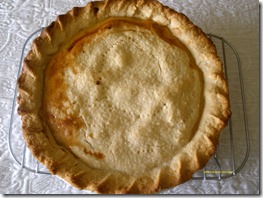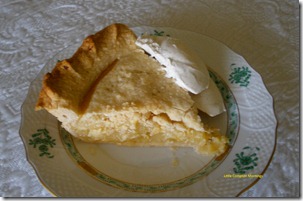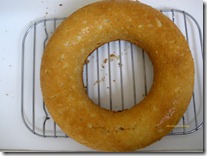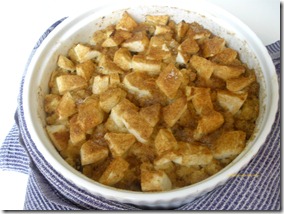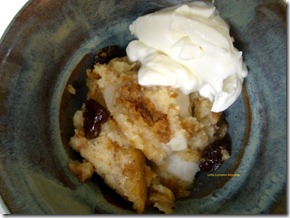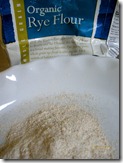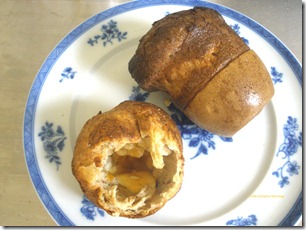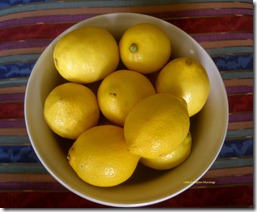 I cannot understand why, for years now, a single lemon in a grocery store costs 60 cents, sometimes more, but you can buy loads of them for a dollar if you happen to live in a city and go to an Asian fruit market. Actually, I do understand, and it is extremely annoying. Most American home cooks use one lemon at a time—to garnish a drink or a plate, to squeeze over a piece of fish, to stuff inside a chicken. They don’t want a lot of lemons growing moldy in their refrigerators. So grocery stores say, aha, we can charge a lot for one lemon, because when you need a lemon, you need a lemon—there is really no suitable substitute, not even a lime in many cases (which also is overpriced)—and you just need one. We end up paying a small fortune for a single lemon, and being resentful,
I cannot understand why, for years now, a single lemon in a grocery store costs 60 cents, sometimes more, but you can buy loads of them for a dollar if you happen to live in a city and go to an Asian fruit market. Actually, I do understand, and it is extremely annoying. Most American home cooks use one lemon at a time—to garnish a drink or a plate, to squeeze over a piece of fish, to stuff inside a chicken. They don’t want a lot of lemons growing moldy in their refrigerators. So grocery stores say, aha, we can charge a lot for one lemon, because when you need a lemon, you need a lemon—there is really no suitable substitute, not even a lime in many cases (which also is overpriced)—and you just need one. We end up paying a small fortune for a single lemon, and being resentful, 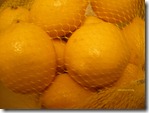 and the store ends up making a huge margin. Thing is, we often buy only one because they are too pricey; we might buy more were they not. A vicious circle.
and the store ends up making a huge margin. Thing is, we often buy only one because they are too pricey; we might buy more were they not. A vicious circle.So when I saw an entire bag of lemons for $1.97 at my grocery store—yes, I know, very odd price—I did a double take, and of course snatched them up. Twelve lemons—that’s 16.4 cents apiece! And they were nice—relatively thin-skinned, smooth, full of juice, and a healthy, average, nonmutant size. I went to bed that night (yes, this is how I fall asleep) thinking about what I should do with them. Lemon curd? Preserved lemons, which I haven’t made in years? (probably because lemons got so expensive) Limoncello?
In thinking about what I might make, and what I haven’t made in a long time, I remembered something I hadn’t thought of in ages. Years and years ago, when my oldest sister Laura Torbet was still living in New York and was working on the Encyclopedia of Crafts, I and an assortment of other people used to go to her big loft studio on W. 23rd Street every day to work on the book. I think there were 6 or 7 of us, and every day we would have some sort of wonderful lunch that my sister would sort of effortlessly throw together. We would gather at a table in the kitchen area and eat between bouts of serious research, writing, and editing about surprisingly technical and brain-frying material. Sometimes we would have a lemon pie made from whole lemons (often called a Shaker Lemon Pie). A friend had given my sister the recipe, as I recall, and she gave it to me and I wrote it down. I still have it.
I got a craving for that pie, thinking about it, and made it, or rather, a variation on it, the next day. I used four lemons, leaving me 8. Hmm, maybe I’ll make some curd after all. The holidays are coming, and I love to slather it between two ginger or spice cookies.
Shaker Honey Lemon Pie
This pie appeals to the waste-not, want-not, farm woman part of me; it is not for everyone, certainly not for anyone looking for something refined—it is not. But it has a sort of genius to it, and is good warm or cold. It should be sweet-tart, and the skins should have a little chew to them but be tender, not hard. It is very nice with ice cream. Serves
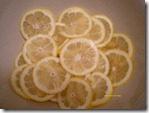 6.
6.Butter-lard or all-butter pastry for a 2-crust pie, divided (see note)
4 medium lemons, as thin-skinned as you can find
1 ½ cups cane sugar
1/3 cup honey
4 large brown eggs
Pinch salt
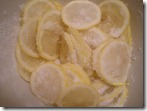
Preheat the oven to 450 F.
Cut a slice off the rounded ends of the lemons. Using a mandolin with a guard to protect your fingers and holding the lemons by the pointy end, slice them thinly into a bowl (if you don’t have a mandolin, use a very sharp thin-slicing knife and slice as paper-thin as you can). Put the sugar into the bowl with the lemon slices, and pick up the bowl and toss, coating the slices. Let them macerate for a couple of hours until the sugar is dissolved and the lemons are sitting in the syrup.
In a small bowl beat the eggs with the honey and pinch of salt. Using a slotted spoon, lift the lemon slices out of their bowl and add them to the eggs/honey. Strain and measure the syrup left in the bowl; it should be about ¾ of a cup. Add about ½ cup to the eggs/honey/lemons, and stir gently.
Roll out half the pastry and fit it into a 9” pie plate. Chill for 10 minutes, and roll out the other half while it is chilling. Pour the lemon filling into the pie shell, distributing the lemon slices evenly; it will be very liquid. Top with the second round of pastry, flute the edges to seal, and prick the top gently. Don’t worry if a little of the filling seeps through.
Bake at 450 F for 10 minutes, then reduce the heat to 350F and bake another 30-35 minutes, until the crust is golden. Remove to a rack to cool until nearly room temperature; serve with ice cream. It is also very good cold. Do refrigerate any leftovers.
___
Note: I upped the fat a little and altered the butter/lard proportion to 8 T butter, 3 T lard; less water was required to bring it together. This makes for a richer, more tender crust that seems to suit and melt into the tart and creamy filling.
